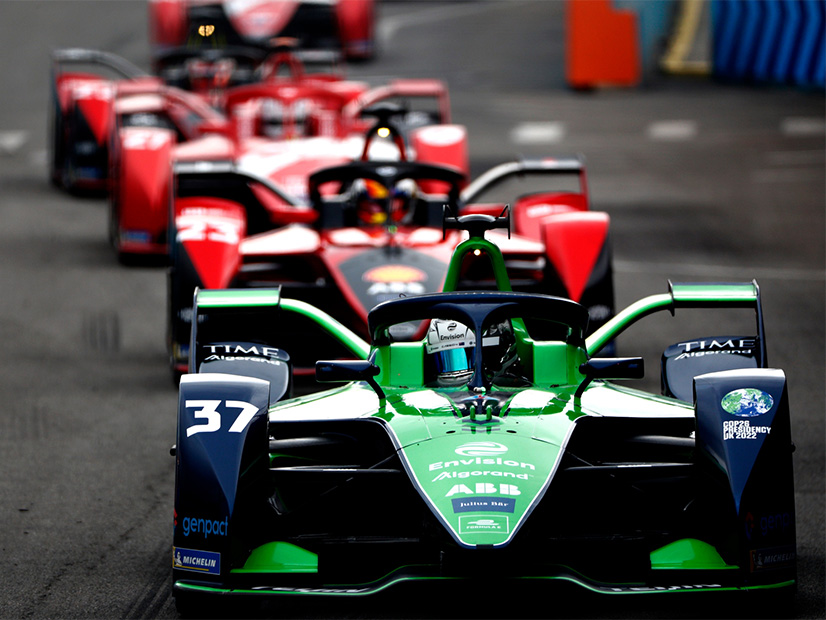
NEW YORK — The ABB FIA Formula E World Championship’s New York City E-Prix returned to Brooklyn on Saturday with a race that started in sunshine and ended abruptly with a rainout and a dramatic multicar crash.
Twenty-two of the championship’s second-generation (Gen2) open-wheeled, single seater electric cars took to the track in the lead up to the Season 8 finale in Seoul, South Korea, in August. The Gen2 cars will retire officially after this season’s championship, and the next generation (Gen3) will debut for the 2023 season.
The Formula E race cars are not as loud as their fossil-fueled counterparts, but they still quicken the pulse up close with a high-pitch whine and top speeds of 200 mph. The 45-minute race Saturday came to a halt with seven minutes remaining when the cars entered a sudden downpour, which caused the two lead cars to hydroplane in quick succession into a wall followed by the fourth-place car.
The crash led to a red flag, stopping the race. While drivers were on standby, officials determined that the race would not continue because of safety concerns and called the winners based on the drivers’ standing in the lap prior to the red flag. Nick Cassidy (No. 37) of Envision Racing, the winner of the race, and second-place winner Lucas di Grassi (No. 11) of ROKiT Venturi Racing, had crashed, while third-place winner Robin Frijns (#4) of Envision survived the slick conditions without incident and took over the lead.

None of the drivers was hurt.
“We had a really nice fight,” Cassidy said at a press conference after the race. “It got slippery; it got fun; and then ultimately, it was a bit too much.”
Di Grassi expressed gratitude for the cars’ safety features.
“This was the biggest crash of my Formula career,” he said. “I’m without any problems, but the car is pretty much destroyed, and that shows how safe these cars are.”
Di Grassi was going about 62 mph when it crashed, he said.
Frijns said visibility was low coming up on the crash site, but he managed to break early enough to make the turn that the lead cars in front of him had missed.
“When the rain came, I saw Lucas in a 90-degree angle in front of me, which is never good,” Frijns said. He added that although he had thought he won the race, he believed the final ruling was “a good one.”
Gen3
The International Automobile Federation (FIA) and Formula E introduced the Gen3 car in April, calling it the “pinnacle of high performance, efficiency and sustainability.”
Seven auto manufacturers have agreed to race under the Gen3 standards next year. They include DS Automobiles, Jaguar, Mahindra Racing, Maserati, NIO 333 Racing, Nissan and Porsche.
The new standards call for a top speed of about 200 mph, which will push the vehicles closer to the traditional Formula One car’s top speed of about 230 mph. On the charging front, the cars will produce about 40% of the energy used in a race through regenerative braking. And it will have ultra-high speed charging capability of 600 kW, or almost double most current commercial chargers, according to FIA.
Among the updated sustainability standards for Gen3 will be the first ever use of linen along with recycled carbon fiber from the Gen2 cars for the new car bodies. FIA said the recycled materials will reduce the carbon footprint of the Gen3 body construction by 10%.
Tires for the new season will include 26% natural rubber and recycled fibers, and all tires will be recycled after use.
In designing the Gen3 car, FIA tracked all the carbon-reduction measures that will reduce the cars’ impact, while carbon offsets will address all remaining emissions.

